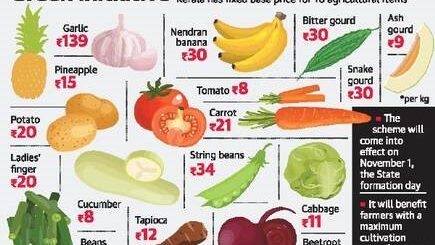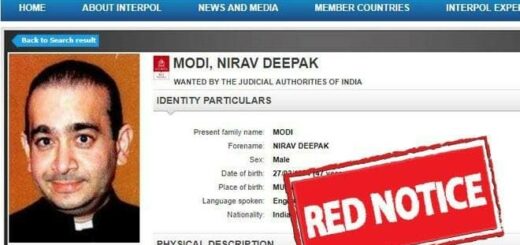National Current Affairs – UPSC/KAS Exams- 6th September 2019
National Conference on Cybercrime Investigation and Forensics
Topic: Cyber Security
In News: The 1st National Conference on Cybercrime Investigation and Forensics was organised by the Central Bureau of Investigation (CBI) in New Delhi.
More on the Topic:
- The two-day national conference was aiming to create a platform and bring together investigators, forensic experts, academia and lawyers to discuss challenges related to cybercrime and ways to find solutions.
- The conference covered one of the mandates of CBI which is to investigate crimes with inter-state and international ramifications.
- It was also discussed in the conference that cases of cybercrimes are complex and require certain skills and forensic skills for detection that poses challenges to law enforcement officers.
- It was also discussed in the conference that capacity building among the pool of competent investigators, judicial officers, prosecutors and digital forensic analysts is required.
- Officers of various departments like DGPs, ADGPs, and SPs dealing with cybercrime participated in the conference.
Significance of Tackling Cyber-crimes:
- India has a huge population and second-largest internet users in the world.
- Increasing the circulation of fake videos on social media.
- Digitization of Indian economy, with measures like Digital India, Government e-marketplace (GeM), Aadhar, etc.
- Post-Article 370 abrogation scenario and fight against terrorism.
- Cybercrime has become a global phenomenon.
- Also strengthening cybersecurity infrastructure will help in intelligence exchange, obtaining digital evidence from abroad, Admissibility of Electronic Evidence, etc.
About Cyber Crimes:
- It is generally known as a criminal activity that involves computer technology and a networked device. Objectives of cybercrime can vary depending on the motive behind it.
- It has been seen that some cases of cybercrimes are carried out against computers or devices directly to damage or disable them, while others use computers or networks to spread malware, illegal information or other materials.
- Internet frauds, ransomware attack, stealing financial account or payment information are some other examples of modern-day cybercrime.
Source: The Hindu
Institutions of Eminence (IoE) Scheme
Topic: Government Policies
In News: Recently, the Ministry of Human Resource Development has declared 5 public Universities as Institutions of Eminence (IoE).
More on the Topic:
- Earlier, in the first round under the IoE scheme, 6 institutions were selected as IoEs.
- The institutes of eminence scheme under the Union human resource development (HRD) ministry aims to project Indian institutes to global recognition.
- The selected institutes will enjoy complete academic and administrative autonomy.
- The selection was made through challenge method mode by the Empowered Expert Committee constituted for the purpose.
- Eligibility: Only higher education institutions currently placed in the top 500 of global rankings or top 50 of the National Institutional Ranking Framework (NIRF) are eligible to apply for the eminence tag.
- The private Institutions of Eminence can also come up as greenfield ventures provided the sponsoring organisation submits a convincing perspective plan for 15 years.
Other benefits include:
- Government Institutions will get additional funding upto 1000 Crore.
- Freedom to have own transparent merit based system for admission of students.
- Freedom to admit additionally foreign students on merit (maximum of 30% of the strength of admitted domestic students).
- Freedom to offer courses within a program as well as to offer degrees in newer areas.
- Freedom to have the flexibility of course structure.
- Flexibility in fixing of curriculum and syllabus, with no UGC mandated curriculum structure.
- Freedom to offer online courses as part of their programmes(But not more than 20% of the programme)
- University Grants Commission (UGC) inspection shall not apply to Institutions of Eminence.
Source: PIB
Kaushalacharya Awards
Topic: Awards and Honours
In News: The Ministry of Skill Development and Entrepreneurship (MSDE) has launched Kaushalacharya Awards at Kaushalacharya Samadar 2019.
More on the Topic:
- Kaushalacharya Awards are launched in a bid to recognize the contribution made by skill trainers and to motivate more trainers to join the Skill India Mission.
- According to MSDE, it is estimated that India will need about 2.5 lakh trainers by 2022, across the skilling ecosystem.
- The Ministry of Skill Development and Entrepreneurship has introduced several schemes like Skills Acquisition and Knowledge Awareness for Livelihood Scheme (SANKALP), Pradhan Mantri Kaushal Vikas Yojana (PMKVY), Pradhan Mantri Yuva Yojana (PM-YUVA) etc. to impart skills in India’s youth.
Source: PIB
Advance Pricing Agreements (APAs)
Topic: Economy
In News: The Central Board of Direct Taxes (CBDT) has entered into 26 Advance Pricing Agreements (APAs) in the first 5 months of the financial year (April to August, 2019). Out of these 26 APAs, 1 is a BAPA entered into with the United Kingdom and the remaining 25 are Unilateral Advance Pricing Agreements (UAPAs).
More on the Topic:
- An APA is an agreement between a taxpayer and the tax authority determining the Transfer Pricing methodology for pricing the tax payer’s international transactions for future years.
- Transfer pricing is referred to the fixing of the price for goods and services sold between related legal subsidiaries (entities) within an enterprise.
- It introduces certainty in tax laws and reduces compliance cost. It makes tax regime investment friendly.
- It aims to avoid disputes between taxpayer and tax regulator.
- The progress of the APA scheme strengthens the government’s resolve of fostering a non-adversarial tax regime.
- The Indian APA programme has been appreciated nationally and internationally for being able to address complex transfer pricing issues in a fair and transparent manner.
Types of APA’s:
- Unilateral APA is an APA that involves only the taxpayer and the tax authority of the country where the taxpayer is located.
- Bilateral APA (BAPA) is an APA that involves the tax payer, associated enterprise (AE) of the taxpayer in the foreign country, tax authority of the country where the taxpayer is located and the foreign tax authority.
- Multilateral APA (MAPA) is an APA that involves the taxpayer, two or more AEs of the tax payer in different foreign countries, tax authority of the country where the taxpayer is located and the tax authorities of AEs.
Benefits of APAs:
- Boost to economy and ease of doing business.
- Provide alternative path to the investors with rollback provision to reduce litigation.
- Introduces certainty in tax law by reducing compliance costs and make tax regime investment friendly.
- Provides certainty to taxpayers regarding transfer pricing to avoid disputes between taxpayer and tax regulator.
Source: PIB
Swachh Iconic Places
Topic: Government Policies
In News: Mata Vaishno Devi shrine atop the Trikuta hills in Reasi district of Jammu and Kashmir has been named country’s ‘Best Swachh Iconic Place’.
More on the Topic:
- Swachh Iconic place is an initiative of Ministry of Drinking Water and Sanitation under Swachh Bharat Mission.
- Aims to take iconic places and their surroundings to higher standards of Swachhata, so that all visitors benefit and also take away home the message of cleanliness.
- It is a collaborative project with three other central Ministries: Urban Development, Culture, Tourism; all levels in the concerned States and more importantly, Public Sector and Private companies as partners.
Source: PIB
North Eastern Regional Agricultural Marketing Corporation Limited (NERAMAC)
Topic: Government Policies
In News: Foundation stone of North Eastern Regional Agricultural Marketing Corporation Limited (NERAMAC) Marketing complex was recently laid in Guwahati, Assam.
More on the Topic:
- The NERAMAC is a pioneer marketing organization in the field of Agri-Horti sector of the North-eastern region, involved in supporting farmers right from the fields and up to the markets to the end consumers through registered FPO/FPCs.
- It was incorporated in the year 1982 as a Government of India Enterprise and having its registered office at Guwahati and operating under the administrative control of the Ministry of Development of North Eastern Region (DoNER).
Model Mains Question: Comment on North East India’s Security and Developmental Issues.
Source: PIB.
External Benchmark Rates
Topic: Economy
In News: The Reserve Bank of India has made it mandatory for all banks to link all new floating rate loans (i.e. personal/retail loans, loans to MSMEs) to an external benchmark with effect from 1st October 2019. The move is aimed at faster transmission of monetary policy rates.
More on the Topic:
- Banks can choose from one of the four external benchmarks — repo rate, three-month treasury bill yield, six-month treasury bill yield or any other benchmark interest rate published by Financial Benchmarks India Private Ltd.
- At present, interest rates on loans are linked to a bank’s marginal cost of fund-based interest rate, known as the Marginal Cost of Lending Rate (MCLR).
- Existing loans and credit limits linked to the MCLR, base rate or Benchmark Prime Lending Rate, would continue till repayment or renewal.
- Those customers wanting to switch to the repo-linked rate can do so on mutually acceptable terms.
Fixed vs Floating Interest Rate:
- The fixed interest rate on loan means repayment of loans in fixed equal instalments over the entire period of the loan. In this case, the interest rate doesn’t change with market fluctuations.
- Floating interest rate by name implies that the rate of interest varies with market conditions. The drawback with floating interest rates is the uneven nature of monthly instalments.
About external bench-marking of loans:
- When you borrow money from a bank, be it for purchasing a house, car or for business purposes, interest is levied based on certain methodologies approved by the Reserve Bank of India (RBI).
- At present, banks use Marginal Cost-based Lending Rate (MCLR) to arrive at their lending rate. Prior to this, it was the Base Rate method and the Benchmark Prime Lending Rate (BPLR). These were all internal benchmarks. Banks have been allowed to use RBI’s policy rate among other market-driven options to calculate lending rates.
- Since February, RBI cut its policy rate by 110 basis points (100 bps=1 percentage point), including the higher-than-expected reduction of 35 bps in its August policy review.
- However, banks have not been so generous. Until August, they had only passed on 29 bps in rate cuts to borrowers, which the RBI thought was unfair.
- Hence, the regulator has now made it compulsory for banks to link their new floating rate home, auto and MSME loans to an external benchmark from October 1 so that the borrowers can enjoy a lower interest rate.
Source: Live Mint














